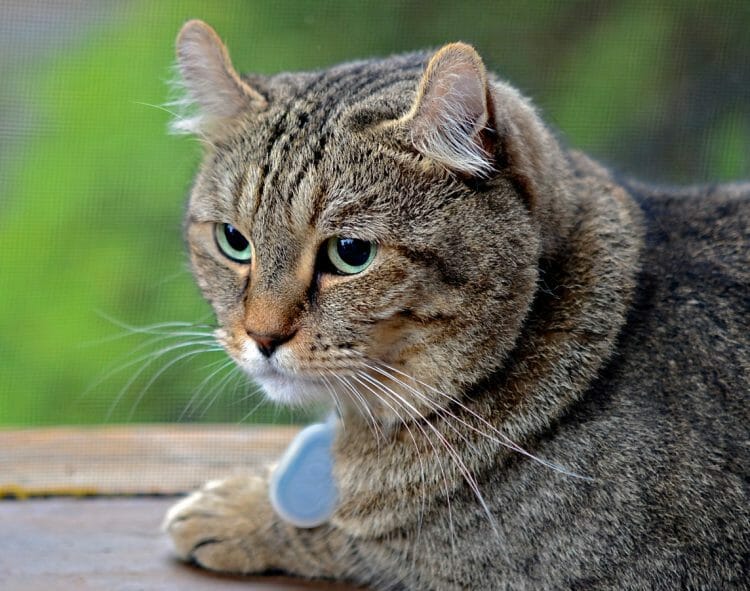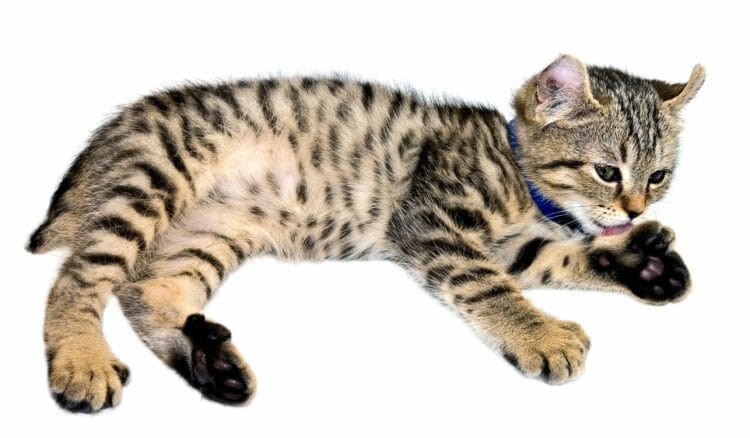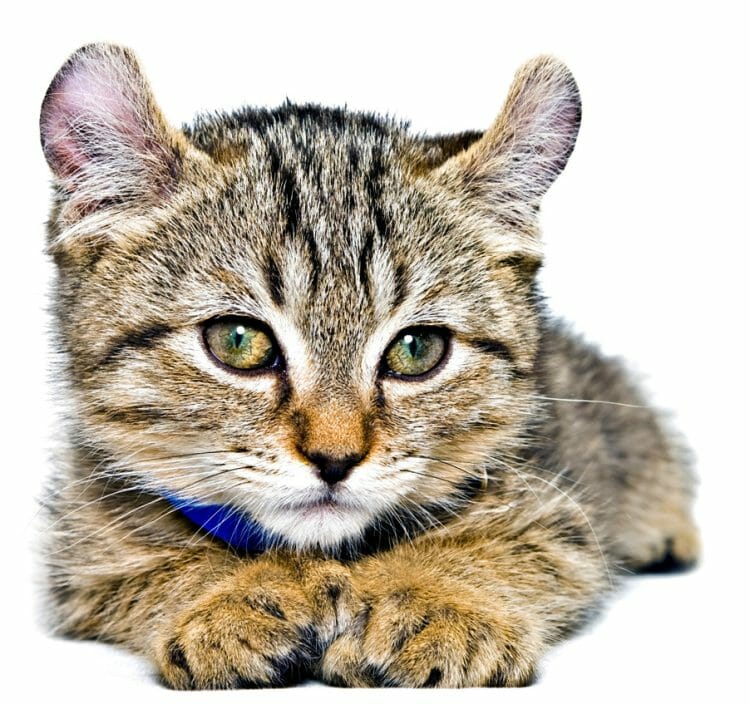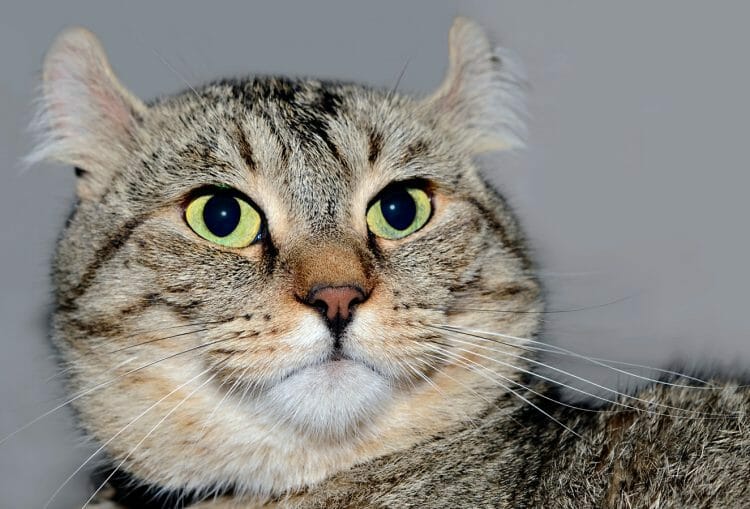Highlander Cat

Highlander Cat Breed
Sometimes known as the Highland Lynx cat or the Highlander Shorthair cat, the Highlander cat is a relatively new cat breed that was created via the deliberate crossing of the Jungle Curl and Desert Lynx cat breeds. Although both experimental foundation breeds used to create the Highlander cat have wild species in their bloodlines, they are domestic cats.

Highlander Cat Personality
The people-centered Highlander is loving and sociable. They enjoy nothing more than sitting and playing with their owners. Friendly with children, these cats relish having the company of a young person to play with.
Energetic and athletic, the Highlander requires plenty of space to run around. A home environment filled with plenty of interactive toys or opportunities for play are well-suited for these active felines. Often, these intelligent cats can be taught tricks such as fetch. Unlike many other feline breeds, Highlanders like water and are happy to play in the sink or bath.
What Does a Highlander Cat Look Like?
A defining feature of the Highlander is its curled ears. As a kitten, they will not have curled ears as this look develops during the first two weeks of life. In addition, a Highlander will have a naturally occurring bobbed tail.
Some Highlanders are polydactyl, which means they have additional toes. Cats that have this congenital physical anomaly are not allowed to be shown in cat shows.

Highlander Cat Colors
The Highlander is available in a large variety of colors and patterns, including solid point, lynx point, and tabby. Bicolored Highlanders are not permitted according to the breed standard.
Highlander Cat Size
Highlander Lynx cats can be medium or large in size, weighing anywhere from 10 to 20 pounds. Males are usually larger (weighing between 15 and 20 pounds), while females typically weigh between 10 and 14 pounds. The body of the Highlander is muscular. The Highlander takes three to four years to reach maturity. Once fully grown, they will be very close to the size of a Maine Coon.

Highlander Cat History
In 1993, Joe Childress, a breeder on the east coast of the United States, decided to create a breed that had the appearance of a big cat, but the personality of a domestic breed. To achieve his aims, he crossed two different hybrid breeds: the Jungle Curl and the Desert Lynx. The result of this union was the Highland Lynx. The word “lynx” was later dropped from the name to indicate that these were not wild cats. However, the breed is still registered with the Rare and Exotic Feline Registry under its old name.
In 2008, The International Cat Association (TICA) recognized the breed within the Preliminary New Breed class. The Highlander was later moved to the Advanced New Breed section in 2016. TICA has classifications for two types of Highlanders: a shorthaired and a longhaired variety.

Highlander Cat Health Problems
Although the Highlander Lynx cat is a relatively healthy cat with a predisposition for very few genetic health problems, it is important to keep an eye on their general health and promptly visit a veterinarian if any symptoms emerge. Some health conditions for owners to be aware of include the following.
- Ear Infections. Felines that shake their heads or seem irritated may be suffering from ear infections. These commonly affect Highlanders and can be caused by a build-up of wax, bacteria, or a tumor. Always seek the assistance of a veterinarian who will examine the ear and may prescribe drops to treat it.
- Horner’s Syndrome. Caused by a dysfunction of the sympathetic nervous system, this neurological condition affects the cat’s facial muscles—causing the eyelids to droop and the eyes to appear sunken. Depending on the cause, the symptoms may go away on their own. However, it is always important to have the animal assessed by a veterinarian as an underlying condition called feline dysautonomia may also be present. The prognosis for this condition is poor.
- Constipation. If a cat strains to defecate, it is considered to be constipated. Feces retained in the lower intestine can be uncomfortable and may weaken the colon over time. Constipation can be caused by the ingestion of bones, a build-up of hairballs, obesity, or an injury to the pelvis. To treat constipation, a veterinarian will usually seek to soften the stool and stimulate the contraction of the colon using medication.
- Urinary Tract Infections (UTIs). UTIs can affect this breed. If the cat strains to urinate, appears to be in pain, or has started urinating outside of its litter box, these may all be signs of urinary tract disease. These infections could be caused by stones or crystals creating a blockage in the urethra or bladder, as well as inflammation, infection, or cancer in the area. Urinary tract issues should be treated seriously as the inability to properly empty the bladder can lead to death.
- Cat Obesity. Approximately one-third of all cats in the United States are obese. Risk factors associated with obesity include heart disease, hip dysplasia, diabetes, cancer, arthritis, high blood pressure, and skin problems. Although there are many causes of obesity (such as Cushing’s Disease and hypothyroidism) and whether a cat is neutered or spayed, owners must ensure a healthy diet is provided and that plenty of activity is encouraged. Speak to a veterinarian for diet advice for any overweight pet.

Highlander Cat Lifespan
The average lifespan of a Highlander cat is between 10 and 15 years. Lifestyle, environment, diet, genetics, and exercise levels will all play a role in determining how long a feline will live. Owners should ensure that their cats receive a full course of vaccinations shortly after birth and follow the recommended booster schedule. Ticks, fleas, and other parasites can all cause major health problems. To keep these at bay, use a preventative monthly treatment as recommended by a veterinarian.
Highlander Cat Adoption
Although the Highlander is a new breed of cat and may not be easily found, anyone looking for Highlander cat breeders should always check adoption centers first. Many felines end up in rescue shelters and need a good home. Be sure to look for a no-kill shelter. Centers like these will not euthanize healthy animals.




